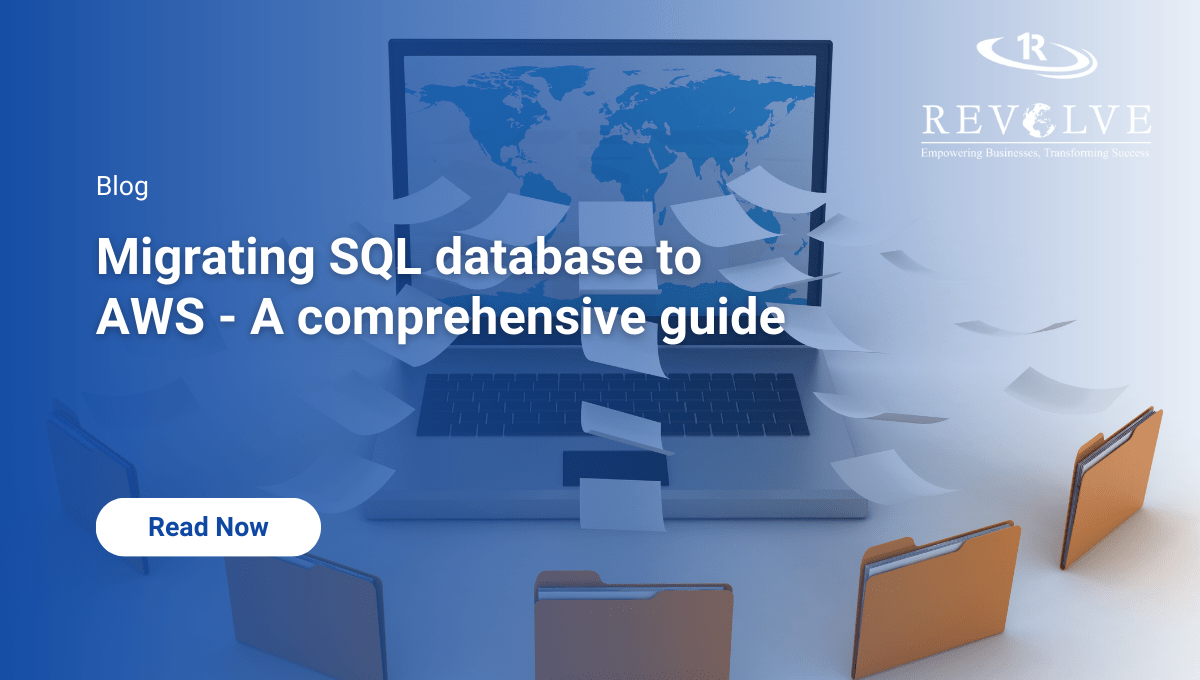Migrating SQL database to AWS – A comprehensive guide
Introduction of Migrating SQL Database to AWS: A Comprehensive Guide
In the ever-evolving landscape of digital infrastructure, businesses are increasingly recognizing the advantages of migrating their SQL databases to the cloud. Amazon Web Services (AWS), a leading cloud service provider, offers a robust and scalable solution for hosting SQL databases. In this comprehensive guide, we’ll navigate the intricacies of migrating your SQL database to AWS, providing you with key insights and considerations for a successful transition.
Why Choose AWS for SQL Database Migration?
Before delving into the migration process, it’s crucial to understand why AWS is a preferred choice for hosting SQL databases. AWS provides a reliable and secure environment with features such as automated backups, flexible storage options, and global accessibility, making it an ideal platform for businesses seeking efficiency and scalability.
Understanding Your SQL Database Structure
The foundation of a successful migration lies in a thorough understanding of your SQL database structure. Conduct a comprehensive assessment, identifying dependencies, data relationships, and potential challenges. This preliminary step ensures a smooth transition and sets the stage for a successful migration.
Selecting the Right AWS Database Service
AWS offers a diverse range of database services, each tailored to specific needs. Depending on your requirements, you can opt for Amazon RDS for simplified management or Amazon EC2 for more control over the underlying infrastructure. Carefully consider factors such as performance, scalability, and maintenance requirements when choosing the appropriate AWS database service.
Data Migration Strategies
With the groundwork laid, it’s time to explore data migration strategies. Whether you opt for a one-time migration or a phased approach, prioritize data integrity and aim for minimal downtime. AWS Database Migration Service (DMS) is a valuable tool that facilitates a streamlined data migration process, ensuring a seamless transfer of data to AWS.
Step-by-Step Migration Process:
Step1 – Assessment and Planning:
Conducting a comprehensive assessment of your SQL database is the initial step toward a successful migration. Identify the database schema, understand the relationships between tables, and evaluate any dependencies. Additionally, assess the compatibility of your database with AWS services. This planning phase sets the foundation for a smooth migration, allowing you to anticipate challenges and plan accordingly. Thorough planning ensures that your migration aligns with your business needs, minimizing the risk of disruptions and ensuring a successful transition to the AWS environment.
Step 2 – AWS Database Service Selection:
Choosing the right AWS database service is a critical decision in the migration process. Consider factors such as the nature of your application, performance requirements, and management preferences. Amazon RDS offers simplified database management, while Amazon EC2 provides more control over the underlying infrastructure. Evaluate the specific features of each service and match them to your SQL database’s requirements. This strategic selection ensures that your database operates optimally in the AWS environment, setting the stage for a successful and efficient migration.
Step 3 – Data Migration Setup:
Setting up the data migration process is a pivotal stage in transitioning your SQL database to AWS. Utilize AWS Database Migration Service (DMS) to streamline the migration process. Configure the source and target endpoints, establishing a secure connection between your on-premises database and AWS. Ensure that the migration setup aligns with your security protocols and compliance requirements. A well-configured setup not only facilitates a smooth migration but also ensures the security and integrity of your data throughout the transfer process.
Step 4 – Schema and Data Migration:
Migrating the database schema is a crucial step in the transition to AWS. Ensure that the structure aligns with the selected AWS database service, making any necessary adjustments. As the migration progresses, focus on transferring data seamlessly from your on-premises database to AWS. Monitor the migration closely, addressing any issues promptly to maintain data accuracy. A meticulous approach to schema and data migration is essential for a successful transition, ensuring that your SQL database operates optimally in the AWS environment.
Step 5 – Post-Migration Validation:
Verification of the migrated data is an integral part of the post-migration phase. Conduct thorough validation checks to ensure the integrity and accuracy of the data on AWS. Compare the data on the cloud platform with the source database, confirming a successful migration. Implement validation scripts and checks to identify any discrepancies or errors, addressing them promptly. Post-migration validation is a critical step in guaranteeing a seamless transition, allowing you to operate confidently in the AWS environment with the assurance that your data remains consistent and accurate.
Step 6 – Security Implementation:
Implementing robust security measures is paramount during and after the migration to AWS. Utilize encryption protocols to safeguard data during transit and storage. Implement access controls to restrict unauthorized access to sensitive information. Additionally, set up monitoring features to detect and respond to any security incidents promptly. Security measures should align with industry best practices and compliance standards. A comprehensive security implementation ensures the confidentiality and integrity of your SQL data in the AWS environment, mitigating potential risks and safeguarding sensitive information.
Step 7 – Performance Optimization:
After migrating your SQL database to AWS, focus on optimizing performance for efficient operation. Utilize AWS tools for performance monitoring, fine-tuning, and scaling. Monitor key performance metrics such as query execution times, resource utilization, and database response rates. Fine-tune configurations based on performance insights to ensure optimal efficiency. Implement scaling strategies to accommodate varying workloads, ensuring consistent performance during peak usage. Performance optimization is an ongoing process, requiring continuous monitoring and adjustment to maintain optimal database functionality in the AWS environment.
Step 8 – Cost Monitoring and Optimization:
While AWS provides scalability, it’s essential to monitor and optimize costs to align with your budgetary constraints. Leverage the AWS cost calculator to estimate expenses accurately based on your database usage patterns. Implement cost-effective storage solutions and rightsize instances to strike the right balance between performance and expenditure. Regularly review your AWS billing statements to identify areas for cost optimization. A proactive approach to cost monitoring and optimization ensures that your SQL database operates efficiently in the AWS environment without exceeding budgetary constraints.
Step 9 – Post-Migration Best Practices:
Establishing post-migration best practices is essential for ongoing operational efficiency. Implement regular backup routines to ensure data resilience and quick recovery in the event of any issues. Stay informed about AWS updates and incorporate new features or improvements into your database management strategy. Regularly review and update security measures to address evolving threats. Conduct periodic performance assessments to identify and address any potential bottlenecks. Post-migration best practices are crucial for maintaining the long-term efficiency and security of your SQL database in the AWS environment.
In conclusion, migrating your SQL database to AWS is a strategic move toward scalability, security, and operational efficiency. By carefully planning each step, choosing the right AWS services, and following best practices, you can navigate the migration process with confidence, unlocking the full potential of your SQL database in the AWS cloud.
Embark on your AWS migration journey with confidence. Contact us to explore how migrating your SQL database to AWS can transform your business operations and set the stage for future growth. Don’t miss out on the benefits of AWS—your pathway to a resilient and scalable database infrastructure.

